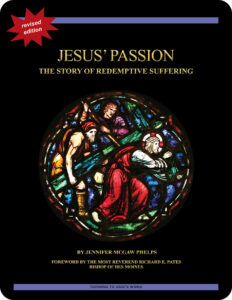 Jesus’ Passion:
Jesus’ Passion:
The Story of Redemptive Suffering
Lesson 5 Crucifixion, Death & Resurrection
the Gospel According to Matthew 26:26–29
the Gospel According to John 19:17—20:8
Revised Standard Version Catholic Edition (RSVCE)*
New American Bible Revised Edition (NABRE)*
Catechism of the Catholic Church
ex libris (in our library)
This material coordinates with Lesson 5 on pages 34–41 in Jesus’ Passion: The Story of Redemptive Suffering. Click on the title of the study to access Lessons 1 through 5.
“For God so loved the world that he gave his only Son, that whoever believes in him should not perish but have eternal life.”—the Gospel According to John 3:16 (RSVCE)**
welcome to our annual Lenten Bible study
We invite readers to become acquainted with Turning to God’s Word Catholic Bible studies through  Jesus’ Passion: The Story of Redemptive Suffering, which was granted
Jesus’ Passion: The Story of Redemptive Suffering, which was granted  an imprimatur in 2014. In 2025, the free digital version of this popular Turning to God’s Word Catholic Bible study will be posted from Ash Wednesday, March 5, through Easter Sunday, April 20. If you have a question or comment about this or any other Turning to God’s Word Catholic Bible study, click on one of the “ask us your question” or “what do you think” buttons on any online study page.
an imprimatur in 2014. In 2025, the free digital version of this popular Turning to God’s Word Catholic Bible study will be posted from Ash Wednesday, March 5, through Easter Sunday, April 20. If you have a question or comment about this or any other Turning to God’s Word Catholic Bible study, click on one of the “ask us your question” or “what do you think” buttons on any online study page.
open with prayer
It’s always wise to begin any Bible study with prayer, whether reading the Scriptures alone or meeting with others in a discussion group. You can pray using your own words or use one of the opening prayers on our website. We especially like the following:
Lord Jesus, you promised to send your Holy Spirit to teach us all things.
As we read and study your word today,
allow it to touch our hearts and change our lives. Amen.
to coordinate with the movie
Lesson 5 coordinates with roughly the final 25 minutes of the film The Passion of the Christ. (See “Movie Motes” on page 34 in the Introduction For God So Loved the World to Jesus’ Passion: The Story of Redemptive Suffering for instructions about where to start and stop watching for this lesson.)
our final lesson
This final lesson is the longest in Jesus’ Passion: The Story of Redemptive Suffering, though the corresponding section of the movie The Passion of the Christ is about the same length as sections for the other lessons. As always, there are a number of very moving scenes in the film, some taken directly from the Scriptures and some extrapolated from the filmmakers’ imaginations, a process sometimes referred to as “taking creative license.”
Resurrection—you could look it up in our archives
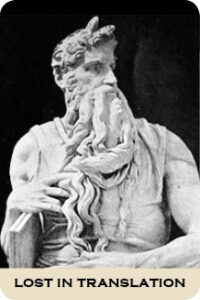 That someone could die and yet live establishes the Resurrection as one of the key mysteries central to the Christian faith. What do you think are other mysteries crucial for Christian believers? In Lost in Translation, Turning to God’s Word author Matthew Phelps helps present-day readers connect with ideas expressed in the original languages of the Scriptures. Learn about the meaning of the word Resurrection. New Lost in Translation entries are posted on Mondays, and past entries are archived on our website. Contact us if you’d like to receive Lost in Translation by email every week.
That someone could die and yet live establishes the Resurrection as one of the key mysteries central to the Christian faith. What do you think are other mysteries crucial for Christian believers? In Lost in Translation, Turning to God’s Word author Matthew Phelps helps present-day readers connect with ideas expressed in the original languages of the Scriptures. Learn about the meaning of the word Resurrection. New Lost in Translation entries are posted on Mondays, and past entries are archived on our website. Contact us if you’d like to receive Lost in Translation by email every week.
blood & water
Although the movie takes a few liberties with the scene depicting blood and water flowing from Jesus’ pierced side, the event itself is scriptural. The relevant passage can be found in the Gospel According to John 19:34–35: “But one of the soldiers pierced his side with a spear and at once there came out blood and water. He who saw it has borne witness—his testimony is true, and he knows that he tells the truth—that you also may believe.”
The Evangelist John makes a point to explain that he’s telling the truth because the passage is describing something rather odd. The substance that we expect to see flowing from a wound is blood, and if blood and water are both flowing from the wound, it seems that these two liquids would be mingled to the extent that it would be difficult to see a distinction between them. The filmmakers did a  good job showing both blood and water, though the depiction that follows that scene and shows the soldier who pierced Jesus falling to his knees isn’t based on any biblical text. You can learn more about the Crucifixion in Lesson 23 It Is Finished in the Turning to God’s Word Catholic Bible study The Gospel According to John: An Encounter with Grace & Truth.
good job showing both blood and water, though the depiction that follows that scene and shows the soldier who pierced Jesus falling to his knees isn’t based on any biblical text. You can learn more about the Crucifixion in Lesson 23 It Is Finished in the Turning to God’s Word Catholic Bible study The Gospel According to John: An Encounter with Grace & Truth.
 a similar image
a similar image
Another similar depiction is seen in the Divine Mercy portrait, which shows red and white rays emanating from Jesus’ heart. Many Catholics are familiar with that picture, and with the Divine Mercy devotion. Divine Mercy Sunday is celebrated by the universal Church on the first Sunday following Easter, and it was chosen to mark the canonization of Pope St. John Paul II, who was spiritual leader of Catholics when this Lenten Bible study first came out.
read the Catechism—more about blood & water
All this focus on blood and water, of course, is leading us straight to the sacraments. Paragraph 1225 in the Catechism of the Catholic Church teaches that the water represents the water of Baptism, and the blood represents the blood of the new and everlasting covenant, the Eucharist.
1225 In his Passover Christ opened to all men the fountain of Baptism. He had already 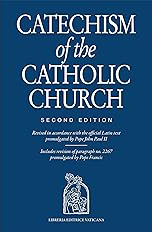 spoken of his Passion, which he was about to suffer in Jerusalem, as a “Baptism” with which he had to be baptized. The blood and water that flowed from the pierced side of the crucified Jesus are types of Baptism and the Eucharist, the sacraments of new life. From then on, it is possible “to be born of water and the Spirit” in order to enter the Kingdom of God.
spoken of his Passion, which he was about to suffer in Jerusalem, as a “Baptism” with which he had to be baptized. The blood and water that flowed from the pierced side of the crucified Jesus are types of Baptism and the Eucharist, the sacraments of new life. From then on, it is possible “to be born of water and the Spirit” in order to enter the Kingdom of God.
See where you are baptized, see where Baptism comes from, if not from the cross of Christ, from his death. There is the whole mystery: he died for you. In him you are redeemed, in him you are saved.
memory & worship
We all have an idea that we know what memory is, so we don’t give it much thought. Much of the time, however, we’re on auto-pilot when we worship. We fail to think too deeply about what we’re doing or why—or about how vital the gift of memory is to our liturgy.
memory is necessary for witness
Without memory, we have no religion. Faith is founded on belief in an experience reported by a reliable witness. The witness remembers something that’s happened and repeats the details of the event. We can choose to believe or not, based on our assessment of the reliability of the witness. If we ourselves actually witness an event, it’s impossible for us to have faith regarding it. Faith is a certainty about something that we ourselves haven’t personally witnessed. We rely on the word of a trusted witness.
who is the ultimate witness?
Throughout the Scriptures, God reveals aspects of himself to chosen people. Then he asks those witnesses to remember and to celebrate his saving actions in the world. The ultimate witness of God’s love for us is Jesus. Our liturgical celebrations are tied to memory, which is necessitated by faith. When we celebrate the Mass, we’re remembering God’s saving action in the world. The sacrament of the Eucharist is a memorial. (Jesus said so: “Do this in memory of me.”) It’s built on the foundation of a previous memorial celebration of God’s deliverance: the Passover. The descendants of Jacob were instructed by God to keep the Passover as a memorial.
We’re in good company when we say that memory is essential for worship. This was a favorite theme of St. Augustine, who wrote that there’s no gratitude without memory. This makes sense. In order to be grateful, we have to be aware of something that we’re grateful for. When God instructs the Israelites to keep the Passover feast, he’s asking them to remember how he brought them out of slavery in Egypt—and to be grateful.
A monk friend has said that if we aren’t paying attention and listening to God, we aren’t going to be able to remember what’s happening. Although this seems like something of a “duh” statement, how many times have you asked someone about something he or she had witnessed and their response was: “I don’t remember that part,” or “I wasn’t listening very closely.” How many times has that been our response to our worship experience at the Mass?
The Greek word for Eucharist means “thanksgiving,” so when Jesus introduces the Eucharist as a memorial, he’s asking us to remember how he died in order to bring us the possibility of eternal life. Worship is founded on gratitude and thanksgiving, and if those elements are missing from our prayers, we’re not really worshiping in spirit and in truth. And we’re risking cutting ourselves off from eternal life.
WHAT DO YOU THINK about this Catholic Bible study?
Send us an email and share your experience studying Jesus’ Passion: The Story of Redemptive Suffering. We’d love to hear from you. The free online version of this Catholic Bible study will be posted again next year for Lent beginning on Ash Wednesday, March 5, 2025.
 ? Which biblical passage from this study did you find to be the most relevant in your life, and why?
? Which biblical passage from this study did you find to be the most relevant in your life, and why?
? How have your ideas about the Catholic faith changed as a result of studying Jesus’ Passion: The Story of Redemptive Suffering?
? What’s one unexpected way that this Bible study has touched your life?
? What’s something you’ve learned from studying Jesus’ Passion: The Story of Redemptive Suffering that you’d like to share with others?
? To whom would you like to recommend Jesus’ Passion: The Story of Redemptive Suffering?
? What questions do you still have about Jesus, Scripture, or the Catholic faith?
ex libris—learn more about Jesus’ Passion, death & Resurrection

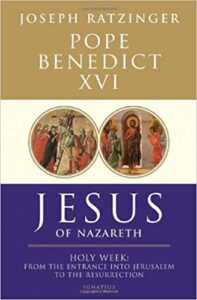 Jesus of Nazareth: Holy Week is one of three books in a series about Jesus in the Gospels. Written by Pope Benedict XVI, it looks at the decisive events that are the focus of Jesus’ last week on earth. The Scripture covered begins with Jesus’ entrance into Jerusalem and continues through the time of his Resurrection. Read excerpts and learn more about the Jesus of Nazareth trilogy and other works related to Bible study at ex libris—main bookshelf.
Jesus of Nazareth: Holy Week is one of three books in a series about Jesus in the Gospels. Written by Pope Benedict XVI, it looks at the decisive events that are the focus of Jesus’ last week on earth. The Scripture covered begins with Jesus’ entrance into Jerusalem and continues through the time of his Resurrection. Read excerpts and learn more about the Jesus of Nazareth trilogy and other works related to Bible study at ex libris—main bookshelf.
the best Catholic commentary about Scripture
 To find out more about how Church teaching is supported by Scripture passages in Jesus’ Passion: The Story of Redemptive Suffering, check out the Index of Citations in the Catechism of the Catholic Church. Links to the primary Scripture passages in the lesson (Revised Standard Version Catholic Edition [RSVCE*]) and relevant paragraphs in the Catechism are provided here. Not every passage in the biblical text for this Catholic Bible study is referenced in a Catechism paragraph, however.
To find out more about how Church teaching is supported by Scripture passages in Jesus’ Passion: The Story of Redemptive Suffering, check out the Index of Citations in the Catechism of the Catholic Church. Links to the primary Scripture passages in the lesson (Revised Standard Version Catholic Edition [RSVCE*]) and relevant paragraphs in the Catechism are provided here. Not every passage in the biblical text for this Catholic Bible study is referenced in a Catechism paragraph, however.
the Gospel According to Matthew 26:26—paragraphs 1328, 1329
the Gospel According to Matthew 26:28—paragraphs 545, 610, 613, 1365, 1846, 2839
the Gospel According to Matthew 26:29—paragraph 1403
the Gospel According to John 19:19–22—paragraph 440
the Gospel According to John 19:21—paragraph 596
the Gospel According to John 19:25—paragraph 495
the Gospel According to John 19:25–27—paragraphs 726, 2619
the Gospel According to John 19:26–27—paragraphs 501, 964, 2605
the Gospel According to John 19:27—paragraphs 2677, 2679
the Gospel According to John 19:28—paragraphs 544, 607, 2561, 2605
the Gospel According to John 19:30—paragraphs 607, 624, 730, 2605
the Gospel According to John 19:31—paragraph 641
the Gospel According to John 19:34—paragraphs 478, 694, 1225
the Gospel According to John 19:36—paragraph 608
the Gospel According to John 19:37—paragraph 1432
the Gospel According to John 19:38—paragraph 575
the Gospel According to John 19:38–39—paragraph 595
the Gospel According to John 19:42—paragraphs 624, 641
the Gospel According to John 20:1—paragraph 2174
the Gospel According to John 20:2—paragraph 640
the Gospel According to John 20:5–7—paragraph 640
the Gospel According to John 20:6—paragraph 640
the Gospel According to John 20:7—paragraph 515
the Gospel According to John 20:8—paragraph 640
don’t forget about our indexes & extra online material

 If you’re trying to locate information about a Scripture passage, you can look it up in the index at the back of the online version of this study. If you want to revisit a commentary, you can look it up by title in the topics index. If you want to learn more about another book of the Bible for which there’s a Turning to God’s Word study, you can read online commentaries and watch any accompanying videos by choosing a lesson from one of the study directories. (There are no lesson videos with Jesus’ Passion: The Story of Redemptive Suffering.) Finally, if you have a question or would like to make a comment about any of our studies, you can use the “ask us your question” or “what do you think” button to email our authors.
If you’re trying to locate information about a Scripture passage, you can look it up in the index at the back of the online version of this study. If you want to revisit a commentary, you can look it up by title in the topics index. If you want to learn more about another book of the Bible for which there’s a Turning to God’s Word study, you can read online commentaries and watch any accompanying videos by choosing a lesson from one of the study directories. (There are no lesson videos with Jesus’ Passion: The Story of Redemptive Suffering.) Finally, if you have a question or would like to make a comment about any of our studies, you can use the “ask us your question” or “what do you think” button to email our authors.
ex libris—Church documents & books about religious topics
Link to magisterial documents referred to in our Bible studies at ex libris—magisterial documents.  This listing includes significant recent encyclicals as well as a number of historical Church documents. Recommended books related to Scripture study can be found at ex libris—main bookshelf.
This listing includes significant recent encyclicals as well as a number of historical Church documents. Recommended books related to Scripture study can be found at ex libris—main bookshelf.
wondering how to pronounce some of these words?
The following links are to readings from the New International Version (NIV) Bible. To listen, click on the audio icon above the printed text. Although not taken from the translations used in our study materials, the NIV readings provide an audio guide to pronunciation of words in this lesson’s primary biblical texts. A close online version of the translation of the Bible used in Catholic liturgy in the United States as well as an audio guide for daily Mass readings for the current month can be found on the website of the United States Conference of Catholic Bishops (USCCB).
the Gospel According to Matthew 26:26–29 (NIV)
the Gospel According to John 19:17—20:8 (NIV)
close with Bible-based prayer related to this lesson
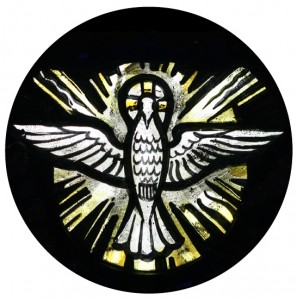 Many groups conclude with a prayer based on Scripture, and some participants include Scripture-specific prayer in their individual study. If you’re uncomfortable composing your own Bible-based prayers, you can follow our four easy steps. If you prefer, you can use the following prayer based on the primary biblical texts that accompany this lesson in Jesus’ Passion: The Story of Redemptive Suffering.
Many groups conclude with a prayer based on Scripture, and some participants include Scripture-specific prayer in their individual study. If you’re uncomfortable composing your own Bible-based prayers, you can follow our four easy steps. If you prefer, you can use the following prayer based on the primary biblical texts that accompany this lesson in Jesus’ Passion: The Story of Redemptive Suffering.
O God, our Father, your Son Jesus confirmed the covenant
you made with your people in fulfillment of Scripture.
Stir up in our spirits the urgent need for repentance
and gratitude for the forgiveness of our sins.
We ask this in union with the Holy Spirit
and in the name of your Son,
who confirmed his divinity by his blood. Amen.
Lesson 4: Via Dolorosa: The Way of Sorrows—the Gospel According to Luke 23:26–32, the Gospel According to Mark 15:21–22, the Gospel According to Matthew 5:43–46, and the Gospel According to John 10:14–18
you also may like our two-part study of the prophets
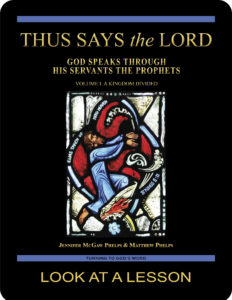
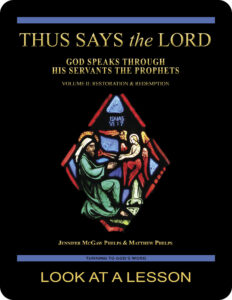 Thus Says the LORD: God Speaks Through His Servants the Prophets—Volume I: A Kingdom Divided examines the prophets in their historical context using the First and Second Books of the Kings and other Old Testament passages written before the Babylonian Exile in 586 B.C. Volume II: Restoration & Redemption looks at the post-exilic prophets. This 51-lesson Catholic Bible study builds on The United Kingdom of Israel: Saul, David & Solomon Foreshadow Christ the King. Click on the books’ covers to view a sample lesson from each volume.
Thus Says the LORD: God Speaks Through His Servants the Prophets—Volume I: A Kingdom Divided examines the prophets in their historical context using the First and Second Books of the Kings and other Old Testament passages written before the Babylonian Exile in 586 B.C. Volume II: Restoration & Redemption looks at the post-exilic prophets. This 51-lesson Catholic Bible study builds on The United Kingdom of Israel: Saul, David & Solomon Foreshadow Christ the King. Click on the books’ covers to view a sample lesson from each volume.
start a Turning to God’s Word Bible study
Thank you for your interest in Jesus’ Passion: The Story of Redemptive Suffering,  our annual free Lenten
our annual free Lenten  Bible study. Lessons can be downloaded from our website through Easter. Information about beginning a group study can be found at start a Bible study. Tami, Matthew, and I are available to answer questions about the Turning to God’s Word method of Catholic Bible study. You may use this email to contact us directly if you’re interested in starting another Turning to God study or in having your study schedule listed with other TtGW study groups on our website. —Jennifer
Bible study. Lessons can be downloaded from our website through Easter. Information about beginning a group study can be found at start a Bible study. Tami, Matthew, and I are available to answer questions about the Turning to God’s Word method of Catholic Bible study. You may use this email to contact us directly if you’re interested in starting another Turning to God study or in having your study schedule listed with other TtGW study groups on our website. —Jennifer
*There are seven deuterocanonical books in the Old Testament—the Books of Tobit, Judith, Wisdom, Sirach, Baruch, and First and Second Maccabees, as well as some passages in the Books of Esther and Daniel. Protestants usually refer to these works as “apocryphal,” a word that means “outside the (Protestant) canon” because they’re excluded from most Protestant Bibles. The word “deuterocanonical” means “second canon”; Catholics use that word to refer to any section of the Catholic Old Testament for which there are no extant, or existing, Hebrew manuscripts. All of the deuterocanonical books appear in the Septuagint, the earliest remaining versions of which date to the 1st century B.C. This Greek translation of the Old Testament was in common use by Jews at the time of Jesus. Learn more by reading How Do Catholic & Protestant Bibles Differ?
Turning to God’s Word printed Bible studies use the 2006 Revised Standard Version Second Catholic Edition (RSV2CE) translation for all Scripture references except those to the Psalms, which are taken from The Abbey Psalms and Canticles, prepared by the Benedictine monks of Conception Abbey and published in 2020 by the United States Conference of Catholic Bishops (USCCB). All Scripture links for the digital version of Jesus’ Passion: The Story of Redemptive Suffering are to the 1966 Revised Standard Version Catholic Edition (RSVCE) translation. The New International Version (NIV) audio recordings follow the same chapter and verse numbering as the RSV Catholic translations, but the NIV translation doesn’t include the deuterocanonical books and passages.
The 1966 RSVCE uses archaic pronouns and verb forms such as “thee,” “thou,” “didst” in the Psalms and in direct quotations attributed to God. The 2006 RSV2CE replaces these with more accessible English. The few significant translation changes in the RSV2CE include rendering almah as “virgin” in the Book of Isaiah 7:14 and restoring the term “begotten” in the Gospel According to John 3:16.
Numbering varies for some passages in this Bible study. Turning to God’s Word studies follow the numbering in the Revised Standard Version Catholic translations (RSV2CE and RSVCE). Discrepancies in the New American Bible Revised Edition (NABRE) are noted in the Index of Scripture Citations.
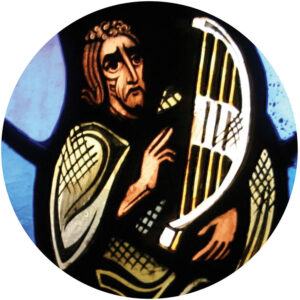 You can learn more about the Psalms by viewing a sample lesson from the Turning to God’s Word Catholic Bible study Sing a New Psalm: Communicating with God Through the Prayers of the Church—Volume I: Lauds & Vespers. The second part of that study, Sing a New Psalm: Communicating with God Through the Prayers of the Church—Volume II: Vigils, Day Prayer & Compline, is scheduled for publication in 2025. Some verse numbers may vary in different translations of the Psalms.
You can learn more about the Psalms by viewing a sample lesson from the Turning to God’s Word Catholic Bible study Sing a New Psalm: Communicating with God Through the Prayers of the Church—Volume I: Lauds & Vespers. The second part of that study, Sing a New Psalm: Communicating with God Through the Prayers of the Church—Volume II: Vigils, Day Prayer & Compline, is scheduled for publication in 2025. Some verse numbers may vary in different translations of the Psalms.
**The Gospel According to John 3:16 (RSV2CE) reads: “For God so loved the world that he gave his only-begotten Son, that whoever believes in him should not perish but have eternal life.”
